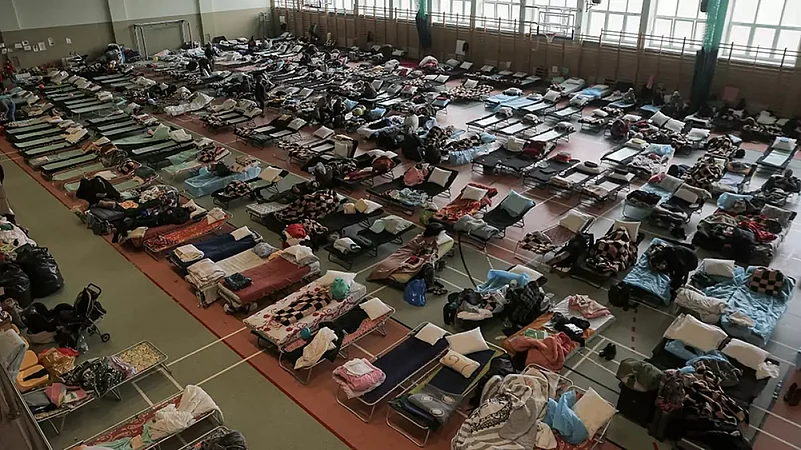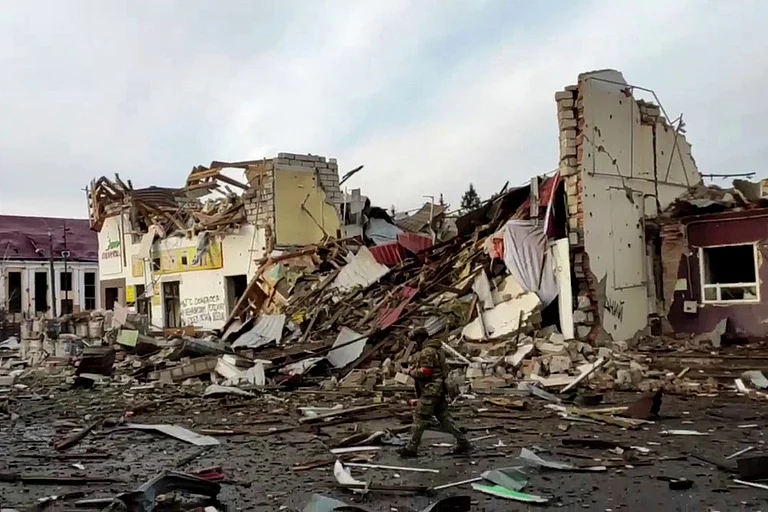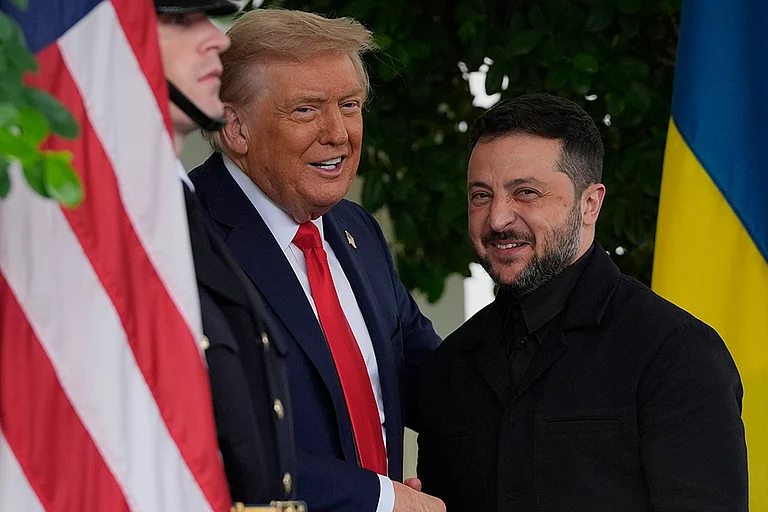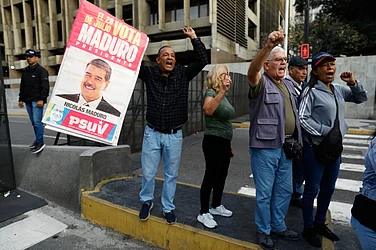About one-third of the Ukrainian capital Kyiv was without power on New Year’s Day.
The outages coincided with a Russian barrage of 20 missiles that targeted Ukraine’s civilian and energy infrastructure. A day later, Russia doubled the number of drones sent into Ukraine which again targeted civilian and energy infrastructure.
The New Year barrages were not isolated incidents but part of the Russian war of attrition that has damaged up to 50 per cent of all Ukrainian energy infrastructure. The Russian strikes have targeted civilian settlements and residential buildings since the beginning of the war, but attacks on energy infrastructure have increased since October.
The average winter temperature in parts of Ukraine can be as low as -2*C and and temperatures can drop to as low as -20*C. Ukrainian President Volodymyr Zelenskyy has accused Russia of “energy terrorism” and other officials have accused Russia of “weaponising winter”. While homes risk losing heating, there are around 5.9 million internally displaced persons and 7.9 million refugees across Europe who were in October asked to not return as there might be not enough resources for them in the harsh winter.
How did the energy crisis become a humanitarian crisis?
The European Union (EU) has been vastly dependent on Russian energy.
By 2020, Russia accounted for 49.1 per cent of EU’s coal imports, 25.7 per cent of crude oil imports, and 38 per cent of gas imports, according to data on the EU website. While such dependency was sustained until 2022 even with all the tensions, the invasion of Ukraine last year changed that.
The West imposed sanctions on Russia and shunned Russian energy. The result was shortage of fuel at pumps and skyrocketing inflation as rising fuel prices reflected in broader inflation as well. The nature of the EU energy consumption also contributed to this crisis.
“Europe largely depended on conventional energy sources, such as natural and liquified gas. Countries like Germany and Belgium also moved away from nuclear energy. So when they faced disruption with the Ukraine War, they found themselves in a crisis. Now they will need to transition back to unconventional sources such as nuclear power,” says Dr Nalin Kumar Mohapatra, Assistant Professor, Centre for Russian and Central Asian Studies, Jawaharlal Nehru University (JNU).
What was expected to be a swift military operation to be over in weeks has turned into a protracted war that’s beginning to show signs of being the biggest European humanitarian crisis since World War II. In this crisis, displacement, energy security, and the winter have come together.
Mohapatra tells Outlook, “The energy crisis from the Ukraine War has now turned into a humanitarian crisis for Europe, not just Ukraine. The energy situation will be a major factor in deciding the outcome of the war. Europe is also facing a food crisis as Ukraine and Russia are major food producers.”
Refugees as instrument of war
Europe has not seen this level of displacement since World War II. At a time when the economies had just started to recover from the Covid-19 pandemic-induced slowdowns, the Ukraine War not just plunged countries into inflationary spirals but also caused inflows of refugees that are further stressing the resources of host countries.
Russia has long seen the Ukraine War as a proxy war with the West and it accuses the United States-led Western world of propping Ukraine against it. In such a framework, Russia is counting on what’s said to be ‘war fatigue’. It hopes that as the conflict gets prolonged, the world will get tired of supporting Ukraine and pouring in arms and aid as their own economies will show signs of strain. The sufferings of civilians through the winter in Ukraine and pressure on Europe's energy scenario is key to this.
The Russian invasion-induced displacement of Ukrainians is yet another part of this approach to tire the West. Russia is effectively using refugees as an instrument of war.
“The war in Ukraine is unfortunate development, where several millions are displaced either as refugees or internally displaced persons. It’s not the first time that refugees have been used as an instrument of war. Refugees have long been pawns in geopolitical conflicts. This is deeply embedded in inter-state and intra-state conflicts. Often, the support to refugees dries with time or when it’s no longer needed to support the geopolitical goals,” says Dr KM Parivelan, Coordinator of Centre for Statelessness and Refugee Studies, Tata Institute of Social Sciences (TISS), Mumbai.
Parivelan tells Outlook that there is no such fatigue in Europe so far regarding Ukrainian refugees, even though some of the countries with greatest inflows are the Eastern European countries, such as Poland, Moldova, and Romania, which don’t have the vast resources of Western European nations.
Though the EU has come together to treat Ukrainian refugees well, Parivelen warns that it might change if the conflict gets prolonged. The issue of refugees, and the broader theme of immigration, could lead to polarisation in host countries and a possible rise of the far-right in response to the prolonged stay of refugees.
If that happens, Russian President Vladimir Putin would yet again end up using refugees to destabilise European societies, which he first did with refugees from war-torn Syria.
The early resolution of Ukraine War is key
No one wants to be a refugee and the idea is to repatriate refugees once conditions have normalised in their homeland, says Parivelan of TISS, but adds that the early end of the war and beginning of reconstruction is key to it. The refugees cannot return to a war-torn country and neighbourhoods lying in ruins.
Parivelan says, “It’s appreciable the way Europe has responded to the Ukrainian refugee crisis. The Germans have been particularly proactive in accommodating and integrating Ukrainians. The temporary protection regime of the EU has allowed Ukrainians better integration in host countries and to even get jobs. This is an appreciable reflection of 1951 Convention on Status of Refugees, where most of European countries are signatories. There has been no resentment so far but that might not be the case if the conflict gets protracted with no end in sight.
“The support is pouring in for now but that might wane as the conflict gets protracted. There could be some resentment then and tensions between the displaced people and host countries could arise. Therefore, a timely end of war and reconstruction is key to handling the crisis.”
Parivelan also highlights that the resources of several host countries are stretched. JNU’s Mohapatra also notes that some of the countries with most refugees are Eastern European countries which were already facing economic slowdowns before the inflow of refugees.
“It's a fact at global level, that neighbouring countries get most of the refugees. Eastern European countries of Romania, Poland, Czech Republic, Bulgaria, Slovokia and Moldova have a large number of refugees. They are also facing power shortages and a pinch from rising gas prices. How long will they be able to sustain? Their energy costs have already doubled or tripled,” says Parivelan.
‘We shouldn’t treat refugees differently’
Though Parivelan of TISS says Europe's role is appreciable in its dealing with Ukrainian refugees so far, he stresses that its treatment of Afghan refugees or Syrian refugees was not the same. He stresses that different classes of refugees should not be treated differently, which is violation of humanitarian ethics vis-à-vis principle of non-discrimination.
Parivelan further notes that though Europe is witnessing the biggest displacement since World War II, it’s the Global South that still accounts for most of the displaced people, which include refugees, internally displaced persons, and stateless persons.
When asked what explains the differential treatment, he tells Outlook, “It’s a combination of societal as well as political prejudice and other concerns such as national security and geopolitics. For example, India has been home to many kinds of refugees, but they have been treated differently. The Tibetans have received the best treatment, then Sri Lankans Tamils have also received camps and doles, but that has not been the case with Afghans or Rohingyas. Therefore, there is need for Refugee legislation is needed for uniform treatment of refugees in India.”
Parivelan emphasises that no one wants to be a refugee in the first place and they eventually return once conditions improve in their homeland.
“The majority of Sri Lankan Tamil refugees have returned over the years. We need to come out of this sense of displaced people being ‘outsiders’. We should engage in humanitarian diplomacy to end conflicts and repatriate refugees, when conditions improve. Educating people and creating awareness on compassion and empathy is key and it's a shared responsibility,” says Parivelan.


























